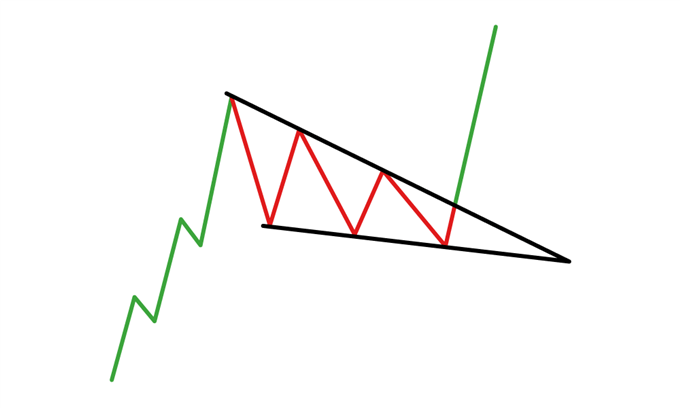Falling Wedge Chart Pattern Analysis: Taqatwar Tehqiqat Ka Zariya
Falling Wedge chart pattern ek ahem technical analysis tool hai jo ke stock market aur financial markets mein istemal hota hai. Is pattern ka maqsad market trend ko samajhna aur traders ko future price movements ke baray mein agahi hasil karna hai. Falling Wedge, jise Urdu mein "Girte Huye Keel" bhi kehte hain, aksar bullish reversals ko pehchanne mein madad karta hai. Is article mein, hum Falling Wedge chart pattern ki taqat aur istemal ke bare mein guftagu karenge.
Falling Wedge Kya Hai?
Falling Wedge ek graphical formation hai jo market price ke movement ko darust karti hai. Yeh pattern jab market mein girawat (downtrend) mein hota hai aur phir prices ke darmiyan symmetric triangle ban jata hai. Ismein prices halki halki girawat karti hain, lekin is triangle ke andar ka area chhota hota hai. Falling Wedge ki pehchan mein, price ke neeche ki line ko support line aur upar ki line ko resistance line kaha jata hai.
Falling Wedge Ki Tafseelat
- Symmetric Triangle Structure: Falling Wedge ka structure symmetric triangle jesa hota hai jismein dono sides barabar slope rakhte hain. Yeh slope down hone ke baad aksar price mein girawat ko indicate karta hai.
- Volume Ka Tafteesh: Falling Wedge ke breakout ke waqt, volume ka bhi dehan diya jata hai. Agar breakout ke samay volume tez ho toh yeh confirmation hoti hai ke trend change hone wala hai.
- Breakout Point: Falling Wedge ka asal faida tab hota hai jab yeh pattern breakout karta hai aur price upward direction mein move karta hai. Is breakout point ko dhyan se dekha jata hai.
- Buy Signal: Agar Falling Wedge ka breakout hota hai aur price upper trend mein chala jata hai, toh yeh ek buy signal hai. Traders ko yeh ishara deta hai ke ab market mein bullish trend shuru ho sakta hai.
- Stop-Loss Orders: Har trading strategy mein risk management ka tawajju diya jata hai. Falling Wedge ke breakout ke baad, traders apne positions ke liye stop-loss orders lagate hain taki nuksan se bacha ja sake.
Falling Wedge chart pattern ek powerful tool hai jo traders ko market ke future trends ke bare mein agahi dene mein madad karta hai. Is pattern ko samajhna aur sahi taur par istemal karna, traders ke liye ek zaroori hunar hai. Magar yaad rahe, har pattern ki tarah, Falling Wedge bhi 100% confirm nahin hota aur market mein hamesha risk hota hai. Is liye, apne trades ko smartly manage karna ahem hai.
Is tarah se, Falling Wedge chart pattern analysis ek tehzeebi tajaweez hai jise traders istemal karke apne trading decisions ko behtar bana sakte hain.



تبصرہ
Расширенный режим Обычный режим